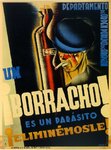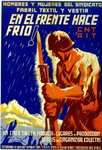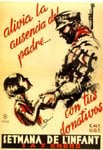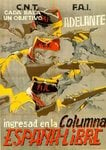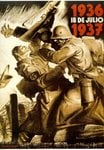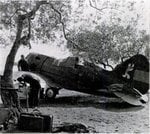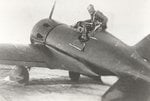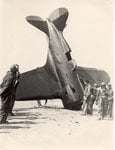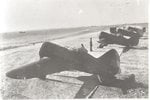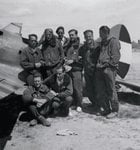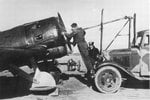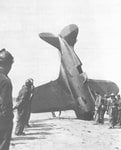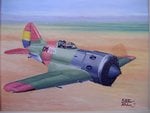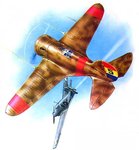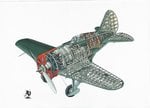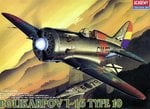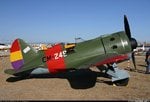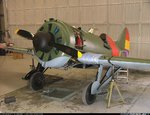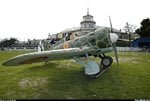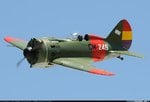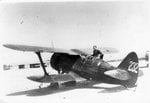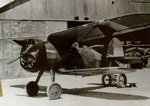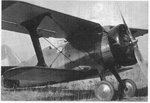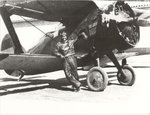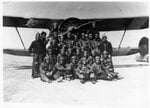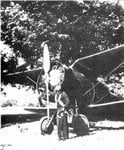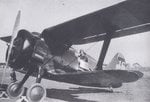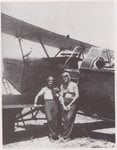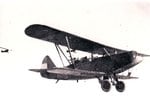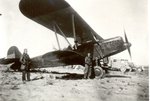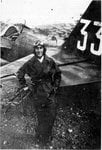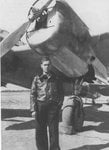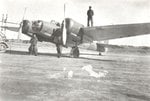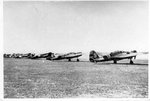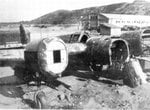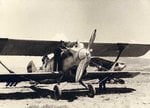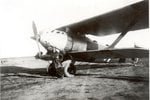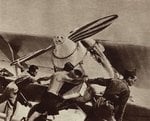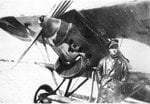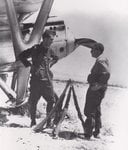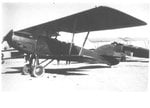In the years between the world wars, governments and military leaders theorized about the future of aerial warfare. But during this almost two-decade period, there was only one major military conflict--the Spanish Civil War. Although only a few countries officially participated, they found it invaluable preparation for World War II. The Spanish Civil War had its beginnings in Spain's elections of February 1936. The Republicans, consisting of the Communists, Socialists, and Basque and Catalonian separatists, won by a narrow margin. Under the leadership of Jose Calvo Sotelo, the right wing (monarchists, the military, and the Fascist Party) continued to oppose the elected government. In July, the Republicans arrested, then assassinated Sotelo, ostensibly in retaliation for the killing of a policeman by the Fascists. The right wing, now united as Nationalists, used this as their justification for launching a revolution. On July 17, 1936, General Francisco Franco and soldiers loyal to him seized a Spanish Army outpost in Morocco. In Spain, other Nationalist troops quickly seized other garrisons. A junta of generals, led by Franco, declared themselves the legal government, and the war officially began.
The world was forced to take sides. Many countries, including the United States and Great Britain, chose to stay neutral, believing that involvement would lead to war. However, individuals from neutral countries did volunteer with the Republican's International Brigade, feeling the cause was worth fighting for. A group of three Americans pilots formed the Patrolla Americana, which eventually grew into a unit of 20 pilots. The Soviet Union, recognizing a potential Communist nation threatened by fascism, was quick to offer aid, including equipment, soldiers, and senior advisors. Many of their planes, including the Polikarpov I-15 and I-16, formed the backbone of the Republican Air Force. And as a gesture to protect itself from being surrounded on three sides by Fascist nations, France provided some aircraft and artillery.
Because a non-intervention agreement in 1936 forbade sympathetic nations to provide airplanes to the competing sides, it was difficult for the Republican government to develop a solid aviation program. It bought small amounts of aircraft where it could, which meant that its air force was composed of small numbers of a lot of different airplanes, from different companies and countries. The Republican government also accepted civilian aircraft, such as the Lockheed Orion, which it could then adapt to military use. There was also a Boeing P-26 that had been brought over as a demonstration model for the Spanish Air Force before the war and was "inherited" by the Republicans.
The Fascist nations found ways to avoid the rules of the non-intervention agreement. Benito Mussolini in Italy was quick to support Franco and sent Spain more than 700 airplanes and troops during the conflict. But it was Germany that was most instrumental in the war. Only days after the war erupted, Franco had sent a request for help to Adolph Hitler. For Germany, the Spanish Civil War came at an opportune time. The nation was initiating a rearmament program, in violation of the World War I peace treaty. A war in Spain would distract the world's governments from this transgression. Plus, Spain had raw materials that Germany could use. Hitler also liked the idea of threatening France with a Fascist government to its south. But most importantly, Spain would provide an opportunity to test equipment and train troops. Although Hitler was careful not to send enough troops to make the world perceive them as a combatant nation, 19,000 German "volunteers" gained valuable combat experience in Spain. Because the Nationalists already had strong army support, Germany sent over mostly aviators from the Luftwaffe. The Germans were organized into the Condor Legion that was equipped with the most modern airplanes and a specially trained staff. Many of the newest airplanes were tested in real combat situations, among them the Heinkel He.111, and the Messerschmitt Bf.109. The Legion was divided into bomber, fighter, reconnaissance, seaplane, communication, medical, and anti-aircraft battalions, and also included an experimental flight group. The chief of staff was Colonel Wolfram von Richthofen, a cousin of "The Red Baron."
The first challenge the German Condor Legion faced was the 20,000 Nationalist troops stranded at the outpost in Morocco, prevented by a Spanish Navy blockade that was loyal to the Republicans from joining the remainder of the Nationalist Army in Seville. The Condor Legion succeeded in evacuating the troops by air—something that had never been done before. On August 6, twenty Junkers Ju-52 transports arrived in Morocco. Over the next two months, the Condor Legion transported all the Nationalist troops to Seville, with the loss of only one airplane. U.S. General Hap Arnold later described the airlift as the most important air power development of the interwar period. After the evacuation, the Condor Legion settled into other jobs. It flew harassment raids against Republican forces and supported ground forces. And it initiated both strategic and tactical bombings. While military thinkers of the time were debating the validity of aerial bombing, the German troops in Spain were obtaining practical experience.
The Condor Legion used tactical bombing after Soviet airplanes began arriving in October 1936 to strengthen the Republican side. Bombings would weaken the troops for the ground attack. In Bilbao, in the north of Spain, saturation bombing was used to shatter the Republican "Iron Belt"—a 35-kilometer (22-mile)-long line, leaving holes open for advancements; it also prevented Republican reinforcements from reaching the gaps. But it was the strategic bombing attacks that attracted the most attention. In the beginning, methods were crude; Republican bombers were given tourist maps to help find their targets. But soon, the attacks became routine. Yet there were no riots or uprisings as theorists had anticipated. Instead, civilian resistance and resolve on both sides were strengthened. One British observer noted that the Spanish would "blacken every balcony so as to get a good view of bursting shrapnel."
Of all the bombing raids, it was the attack on Guernica, a city in the north of Spain, which came to symbolize the horrors of aerial bombing. Guernica was the center of Basque identity and culture, boasting the parliament building and an oak tree under which Basque leaders annually swore to uphold the liberties of the people. For three hours on the afternoon of April 26, 1937, planes from the Condor Legion dropped 100,000 pounds (almost 91 million kilograms) of bombs on the city and strafed citizens in the street by machine guns. Republican sources reported 1,500 dead. The only military target in town, a bridge, remained untouched. Instead, it appeared to many, including a London Times correspondent, that "the object of the bombardment was seemingly the demoralization of the civilian population and the destruction of the cradle of the Basque race." Everyone was shocked by the attack, which raised ethical questions all over the world. For many years, the Nationalists denied involvement and claimed that the Basques had bombed themselves for propaganda. They did not admit their involvement until they released reports in the 1970s, after Franco's death. The Republicans used the tragedy to gain support, displaying Pablo Picasso's painting Guernicain the Spanish Pavilion at the 1938 Paris World's Fair. But in the end, the greatest effect of the bombing was to make some European nations fear they might be the next Guernica and thus, they capitulated to Hitler's demands at Munich in September 1938.
At the Nuremberg trials following World War II, Luftwaffe commandant Hermann Goering said, "Spain gave me an opportunity to try out my young air force." The experience gained in Spain helped Germany in the early months of the war far more than the desktop theories and controlled tests of other nations. Having noted poor results from strategic bombing, Germany focused its funds elsewhere. Many planes were tested in real combat situations. And Germany also learned that even with air superiority, a bomber force still required a fighter escort. But most instrumental were the 19,000 Luftwaffe personnel who rotated through the Condor Legion until the Republicans surrendered in January 1939, leaving the Fascists and Franco in power. Several months later, these veterans of the Spanish Civil War would be flying over Poland, Czechoslovakia, France, and the rest of Europe--an experienced, well-trained air force fighting for Hitler.
Note: This thread is a remake. I am going to add more information and new pictures, but it will basicly contain all the data provided before.
The world was forced to take sides. Many countries, including the United States and Great Britain, chose to stay neutral, believing that involvement would lead to war. However, individuals from neutral countries did volunteer with the Republican's International Brigade, feeling the cause was worth fighting for. A group of three Americans pilots formed the Patrolla Americana, which eventually grew into a unit of 20 pilots. The Soviet Union, recognizing a potential Communist nation threatened by fascism, was quick to offer aid, including equipment, soldiers, and senior advisors. Many of their planes, including the Polikarpov I-15 and I-16, formed the backbone of the Republican Air Force. And as a gesture to protect itself from being surrounded on three sides by Fascist nations, France provided some aircraft and artillery.
Because a non-intervention agreement in 1936 forbade sympathetic nations to provide airplanes to the competing sides, it was difficult for the Republican government to develop a solid aviation program. It bought small amounts of aircraft where it could, which meant that its air force was composed of small numbers of a lot of different airplanes, from different companies and countries. The Republican government also accepted civilian aircraft, such as the Lockheed Orion, which it could then adapt to military use. There was also a Boeing P-26 that had been brought over as a demonstration model for the Spanish Air Force before the war and was "inherited" by the Republicans.
The Fascist nations found ways to avoid the rules of the non-intervention agreement. Benito Mussolini in Italy was quick to support Franco and sent Spain more than 700 airplanes and troops during the conflict. But it was Germany that was most instrumental in the war. Only days after the war erupted, Franco had sent a request for help to Adolph Hitler. For Germany, the Spanish Civil War came at an opportune time. The nation was initiating a rearmament program, in violation of the World War I peace treaty. A war in Spain would distract the world's governments from this transgression. Plus, Spain had raw materials that Germany could use. Hitler also liked the idea of threatening France with a Fascist government to its south. But most importantly, Spain would provide an opportunity to test equipment and train troops. Although Hitler was careful not to send enough troops to make the world perceive them as a combatant nation, 19,000 German "volunteers" gained valuable combat experience in Spain. Because the Nationalists already had strong army support, Germany sent over mostly aviators from the Luftwaffe. The Germans were organized into the Condor Legion that was equipped with the most modern airplanes and a specially trained staff. Many of the newest airplanes were tested in real combat situations, among them the Heinkel He.111, and the Messerschmitt Bf.109. The Legion was divided into bomber, fighter, reconnaissance, seaplane, communication, medical, and anti-aircraft battalions, and also included an experimental flight group. The chief of staff was Colonel Wolfram von Richthofen, a cousin of "The Red Baron."
The first challenge the German Condor Legion faced was the 20,000 Nationalist troops stranded at the outpost in Morocco, prevented by a Spanish Navy blockade that was loyal to the Republicans from joining the remainder of the Nationalist Army in Seville. The Condor Legion succeeded in evacuating the troops by air—something that had never been done before. On August 6, twenty Junkers Ju-52 transports arrived in Morocco. Over the next two months, the Condor Legion transported all the Nationalist troops to Seville, with the loss of only one airplane. U.S. General Hap Arnold later described the airlift as the most important air power development of the interwar period. After the evacuation, the Condor Legion settled into other jobs. It flew harassment raids against Republican forces and supported ground forces. And it initiated both strategic and tactical bombings. While military thinkers of the time were debating the validity of aerial bombing, the German troops in Spain were obtaining practical experience.
The Condor Legion used tactical bombing after Soviet airplanes began arriving in October 1936 to strengthen the Republican side. Bombings would weaken the troops for the ground attack. In Bilbao, in the north of Spain, saturation bombing was used to shatter the Republican "Iron Belt"—a 35-kilometer (22-mile)-long line, leaving holes open for advancements; it also prevented Republican reinforcements from reaching the gaps. But it was the strategic bombing attacks that attracted the most attention. In the beginning, methods were crude; Republican bombers were given tourist maps to help find their targets. But soon, the attacks became routine. Yet there were no riots or uprisings as theorists had anticipated. Instead, civilian resistance and resolve on both sides were strengthened. One British observer noted that the Spanish would "blacken every balcony so as to get a good view of bursting shrapnel."
Of all the bombing raids, it was the attack on Guernica, a city in the north of Spain, which came to symbolize the horrors of aerial bombing. Guernica was the center of Basque identity and culture, boasting the parliament building and an oak tree under which Basque leaders annually swore to uphold the liberties of the people. For three hours on the afternoon of April 26, 1937, planes from the Condor Legion dropped 100,000 pounds (almost 91 million kilograms) of bombs on the city and strafed citizens in the street by machine guns. Republican sources reported 1,500 dead. The only military target in town, a bridge, remained untouched. Instead, it appeared to many, including a London Times correspondent, that "the object of the bombardment was seemingly the demoralization of the civilian population and the destruction of the cradle of the Basque race." Everyone was shocked by the attack, which raised ethical questions all over the world. For many years, the Nationalists denied involvement and claimed that the Basques had bombed themselves for propaganda. They did not admit their involvement until they released reports in the 1970s, after Franco's death. The Republicans used the tragedy to gain support, displaying Pablo Picasso's painting Guernicain the Spanish Pavilion at the 1938 Paris World's Fair. But in the end, the greatest effect of the bombing was to make some European nations fear they might be the next Guernica and thus, they capitulated to Hitler's demands at Munich in September 1938.
At the Nuremberg trials following World War II, Luftwaffe commandant Hermann Goering said, "Spain gave me an opportunity to try out my young air force." The experience gained in Spain helped Germany in the early months of the war far more than the desktop theories and controlled tests of other nations. Having noted poor results from strategic bombing, Germany focused its funds elsewhere. Many planes were tested in real combat situations. And Germany also learned that even with air superiority, a bomber force still required a fighter escort. But most instrumental were the 19,000 Luftwaffe personnel who rotated through the Condor Legion until the Republicans surrendered in January 1939, leaving the Fascists and Franco in power. Several months later, these veterans of the Spanish Civil War would be flying over Poland, Czechoslovakia, France, and the rest of Europe--an experienced, well-trained air force fighting for Hitler.
Note: This thread is a remake. I am going to add more information and new pictures, but it will basicly contain all the data provided before.

